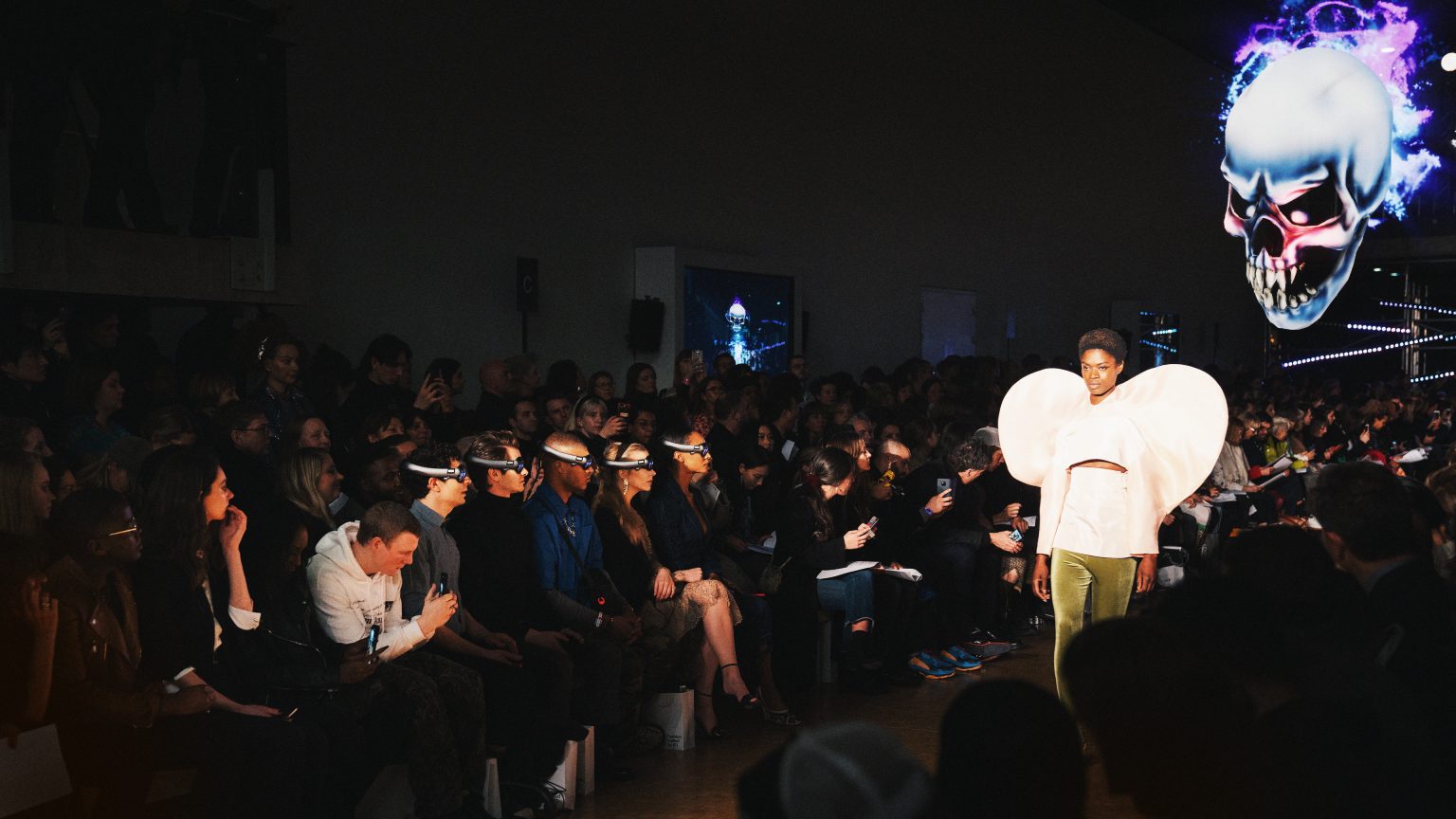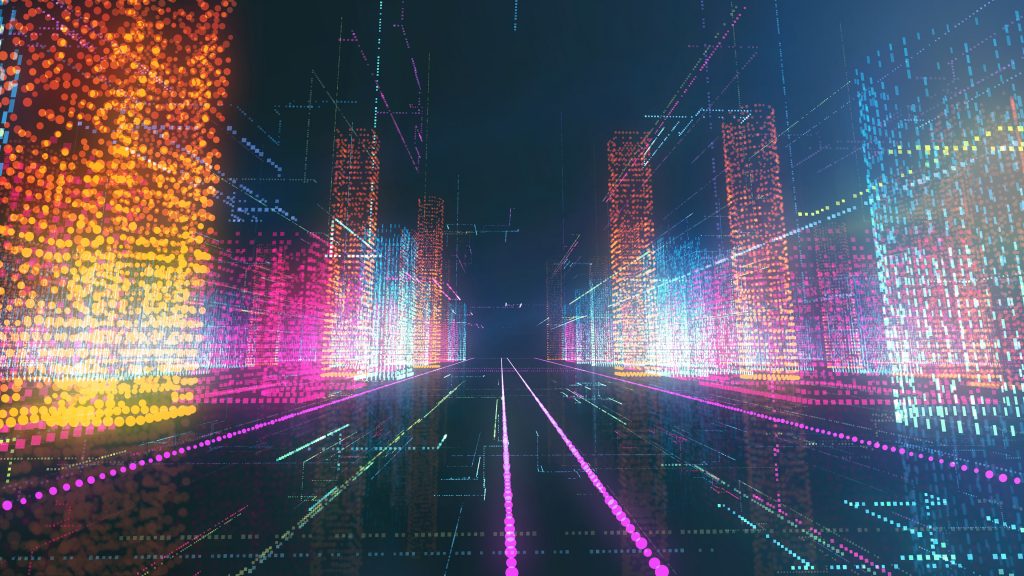The fashion industry has always been a hotbed for new trends, and technology is no exception. Immersive technology—virtual reality (VR), augmented reality (AR), and mixed reality (MR)—has the potential to transform the way the fashion industry creates, presents, and retails its products.
Here are just some of the ways that the fashion world has embraced immersive technology.
The Catwalk
Fashion brands, plus other brands wanting to get involved with fashion, can stand out and get noticed through their use of new technology on the catwalk.
Back in 2014, Topshop staged the world’s first virtual catwalk. Four lucky winners sat in the window of the flagship Oxford Circus store and donned bespoke virtual reality headsets and headphones that played the show live from the Tate Modern. The winners were not only able to see the models walk directly past them but look up to the Tate Modern ceiling, to the celebrities sat virtually next to them. They were also kept updated with a moving Twitter feed.
More recently, just last week, in fact, British telecommunications and internet service provider, Three, partnered with London Fashion Week to announce its wider 5G rollout with an MA Fashion Central Saint Martins show. The event fused fashion with the latest technology, including spatial audio, haptic feedback, a 46-meter projection for the runway and an array of aromas. The show forms part of Three’s long-term collaboration with Central Saint Martins. The partnership also produced the world’s first 5G mixed-reality catwalk in Feb 2019.
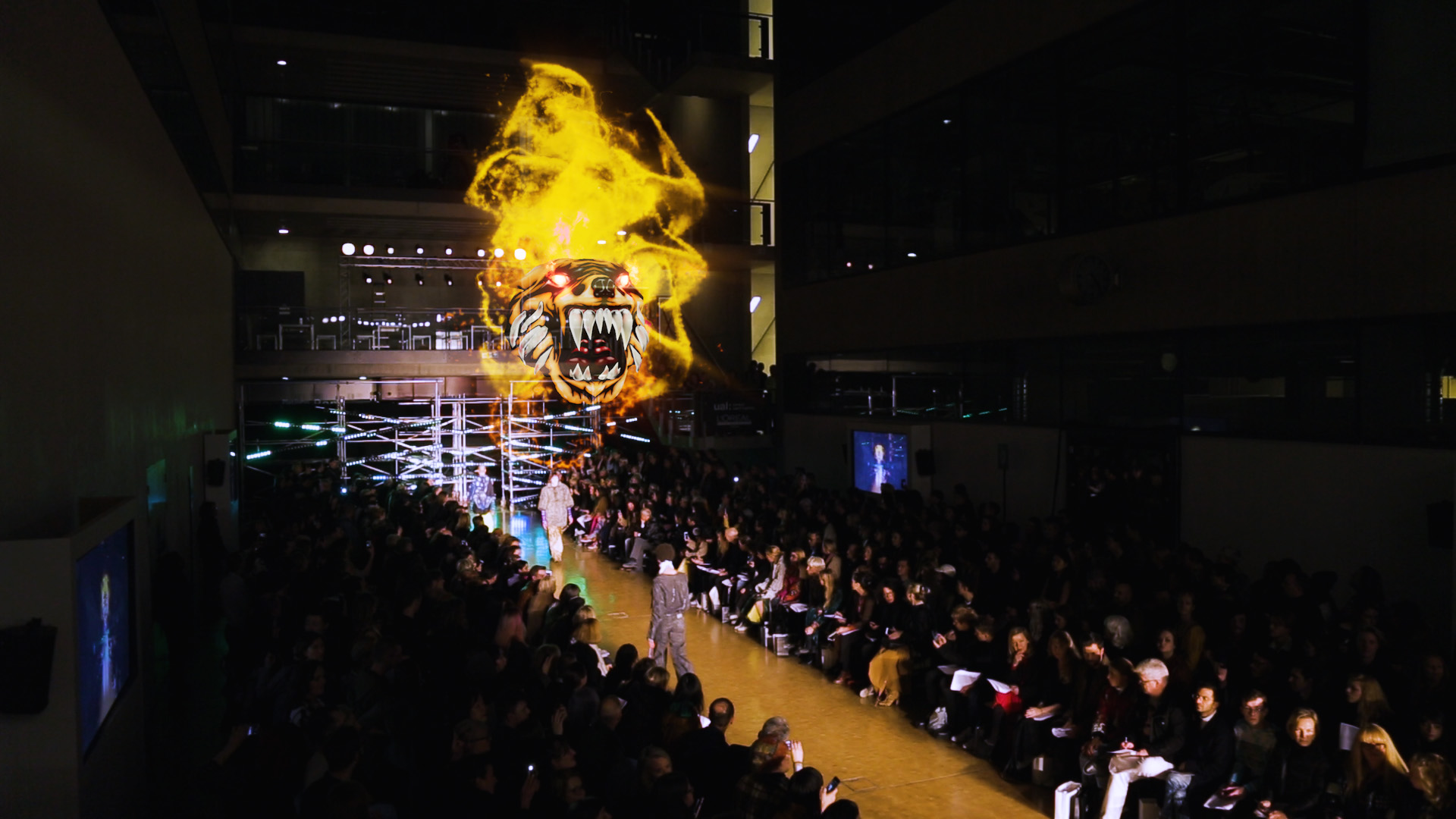
Try Before You Buy
Offering a digital “try-before-you-buy” allows retailers to close the gap between online and offline channels. A customer can try-on the product on a screen and see how it looks, or how makeup suits them, etc.
Last year, many brands embraced try-before-you-buy AR tech with 100 million people using it. For example, Dior used augmented reality to allow consumers to try on sunglasses using their smartphones. Via a new filter on Instagram, users could add the DiorSoLight sunglasses onto their faces in the image. These AR filters offer practical benefits to consumers, but as they are designed to go viral, they also offer huge growth opportunities for brands.
According to International Data Corporation, the retail sector is expected to spend $1.5 billion on augmented reality and virtual reality technology in 2020. We’ve already seen brands utilize the tech this year—ASOS kicked off the year with the launch of “see My Fit.” The AR tool allows you to view an outfit on 16 different body shapes to give shoppers an idea of what the clothes would look like on themselves.
“With this trial of See My Fit, we’re using the latest AR technology to put the power in our customers’ hands, so they can choose to view a dress on the model that they most identify with, in a way that wouldn’t be possible using traditional model-shooting techniques,” Tim Carey, senior content manager at ASOS Studios, said in a statement.
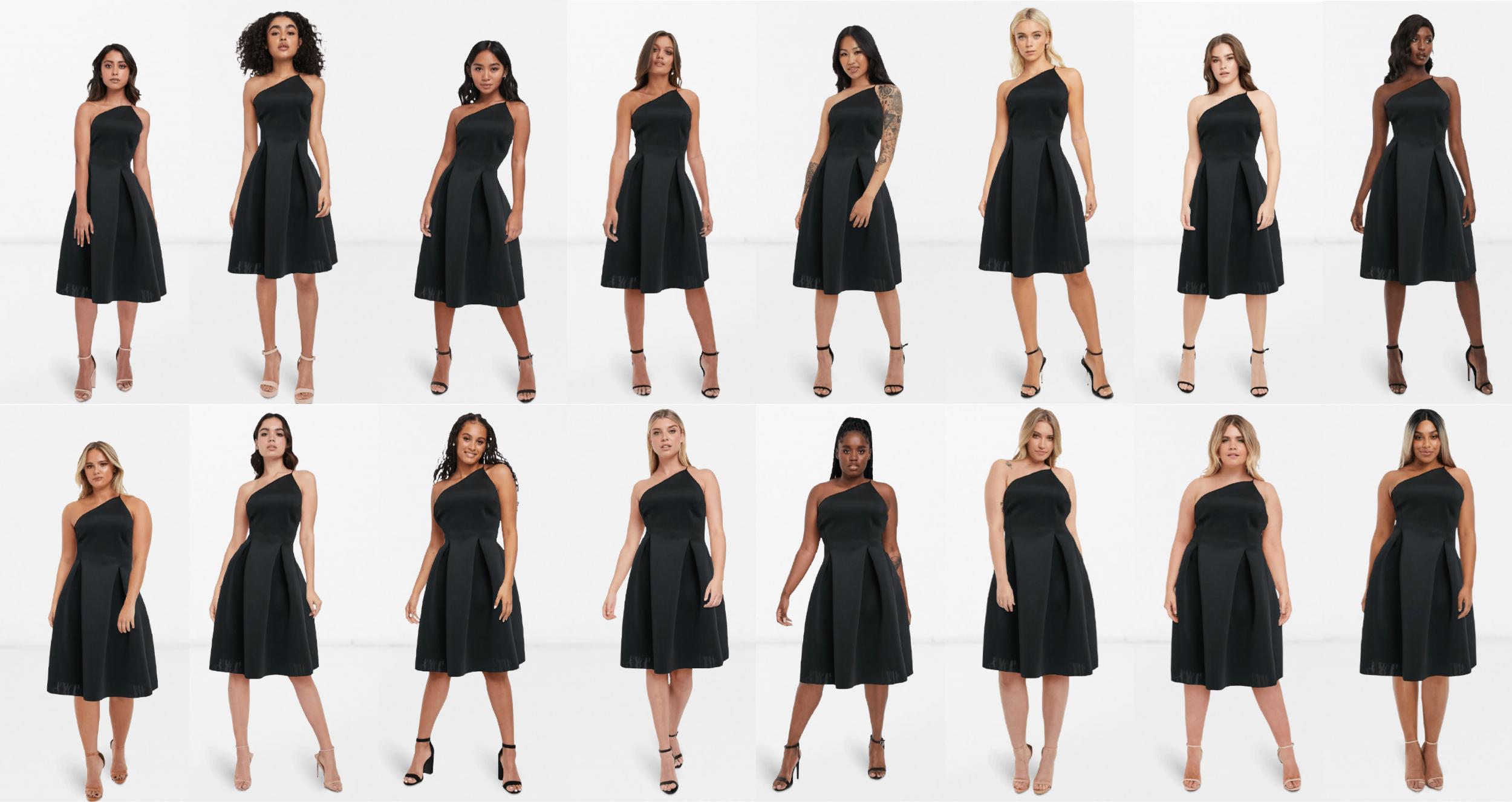
The In-store Experience
Everyone is talking about the death of the High Street, could technology help shops survive? XR can certainly be used as a differentiator and a reason for people to visit a physical store, rather than buy online. In fact, many retailers are already embracing immersive technology.
For example, Zara used augmented reality to bring virtual models to life in-store. The two-week initiative was rolled out across 120 stores globally. It allowed customers who downloaded the Zara AR app to hold up their phone to certain store windows or a sensor within the store and see models come to life on their screens—walking and talking—wearing selected items from the Zara range, which they could click through and buy. Zara is not the first brand to use AR. Brands such as Burberry and Gap have also dabbled.
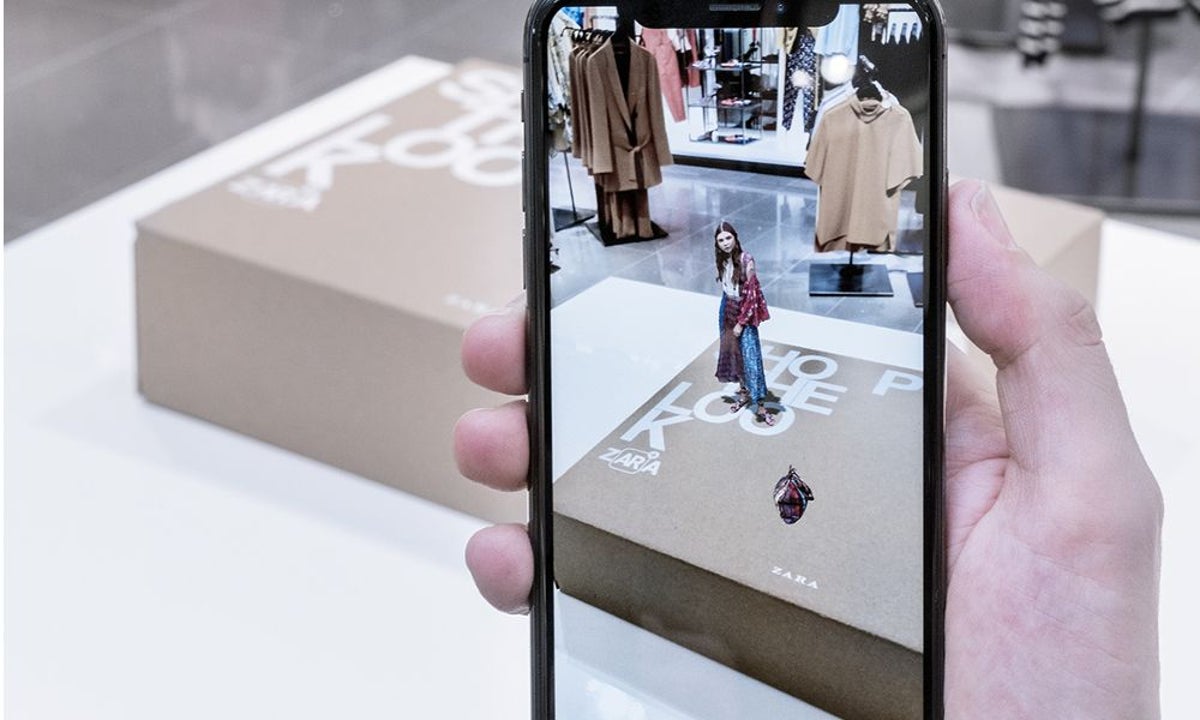
Smart mirrors can enhance the shopping experience in a useful way by allowing customers to try on different colors and styles easily. MemoMi promises to re-invent the experience of luxury shopping with “trying on without taking off.” This high-fidelity, digital imaging software platform delivers live color change to what you are wearing or allows you to try on clothes, add accessories, plus change patterns and colors without actually trying on a single item. Patented technology precisely maps and analyzes data to provide accurate, personalized recommendations in real-time.
The Oak Mirror is another product that aims to transform the in-store experience, focusing on the fitting room. Acting as both a mirror and touch screen, shoppers can use the interactive surface to change the lighting of a fitting room, or contact sales associates to request additional colors or sizes or “complete the look” with accessories.

